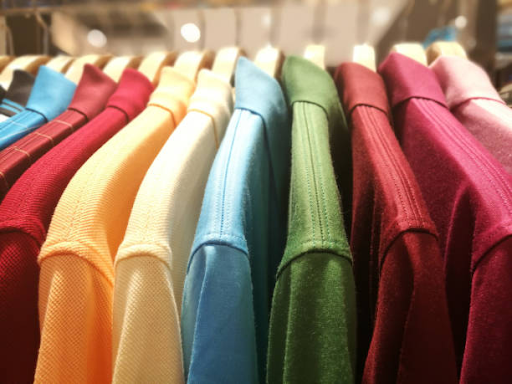The power of gold is undeniable. It is a commodity that has been used and even worshipped throughout centuries. You’ve probably seen emperors, royalty and religious leaders wear garments embellished in gold.
This is called gold work embroidery, a popular needlework technique that uses golden threads. Let’s take a closer look at this distinctive style and explore its origins and appeal:
The History of Gold Embroidery
(Image Source: elements.envato.com)
Gold work embroidery has been used throughout centuries. This expensive yet compelling artform was a great way to showcase opulence and luxury. Even till this day, gold work is widely used for fashion and interior design.
Gold work originated in Asia and eventually made its way to the rest of the world. Many important figures such as queens, pharaohs and priests used gold to represent their divine authority.
There were also widespread “goldwork fads” like the opus anglicanum and the chao embroidery. This was a time where gold work surged, leading to the development of intricate techniques.
While goldwork embroidery remains very popular, many of these techniques have been adjusted to suit modern taste and preferences.
Symbolism of Golden Thread
(Image Source: elements.envato.com)
The symbolism of the golden thread runs deep. It carries both historical significance and cultural meanings, recognised as a symbol of wealth and prosperity. In many cultures, it symbolises success and good fortune.
It also has divine authority and has been used to symbolise power. That’s why gold has been favoured by royalty and nobility as a way to display their status and prestige. The use of gold may also carry symbolic meanings related to spiritual enlightenment.
The radiant glow of the golden thread symbolises the inner light that guides and inspires individuals on their spiritual journey. Additionally, gold is a safe long term investment and represents financial stability and security.
An asset that can be passed down from generation to generation.
What is Gold Work Embroidery?
(Image Source: elements.envato.com)
Gold work is a form of decorative embroidery that adds a touch of luxury and opulence to textiles. It is a needlework technique that involves the use of golden threads. This is not limited to other metal threads including silver and copper.
Gold work also incorporates other embellishments such as beads, pearls, and sequins. A special feature of gold work is the way light is absorbed by the metal. While most of the light is reflected, a small portion of it is absorbed.
This creates a unique shimmering effect that adds some dimension to the embroidery. These days, gold work embroidery can be made with imitation metals.
This makes it easier for designers to experiment with different gold work embroidery techniques without using real gold.
Gold Work Embroidery Techniques and Designs
Gold work encompasses a wide range of techniques and styles. Some of the most common techniques include:
Couching: In this technique, the metal threads are laid flat on the fabric and secured in place with fine stitches. This is known as couching and it allows for intricate designs and patterns to be created with the metallic threads.
Padding: Padding is often used in gold work embroidery to create raised areas and add dimension to the design. This is achieved by layering threads or fabric underneath the metal threads before stitching them onto the fabric.
Cutwork: Cutwork involves cutting away sections of fabric to create openings or negative spaces within the design. This technique can be used to create intricate lace-like patterns and textures.
Beading and Sequinning: In addition to metal threads, gold work embroidery often incorporates other embellishments such as beads, pearls, and sequins. These add further texture and sparkle to the design, enhancing its overall beauty.
Type of Metal Threads
In order to create different textures, a variety of threads exist. They’re usually made from a combination of other materials. They also fall in two main categories; thread and wires that are couched and those that are stitched through.
Here are some of the most common types of threads:
Smooth Passing Threads: These threads are flat and smooth, often used for outlining the edges of designs in gold work embroidery. They provide a sleek and elegant look to the finished piece, and are typically couched onto the fabric.
Rough Purl: Rough purl threads have a textured surface, adding depth and dimension to the embroidery. They are frequently used to fill in larger areas of the design.
They also create a more intricate and layered effect, often couched onto the fabric.
Pearl Purl: Pearl purl threads have a coiled or spiralled appearance, resembling small beads or pearls. They are commonly used for outlining and adding decorative accents to the embroidery, creating a raised and ornate effect.
Check Purl: Check purl threads have a crisscross pattern. They add visual interest and texture to the embroidery. They are often used for filling in small areas of the design and creating intricate patterns and motifs.
Passing Thread: Passing thread is a thin, flexible wire wrapped with a thin layer of metal thread. It is often used for adding fine details and highlights to the embroidery.
This creates a delicate and refined look, and can be stitched through the fabric.
Japanese Gold Thread (Kin): Japanese gold thread, also known as Kin, is made from real gold or gold-plated materials. It is known for its high quality and lustrous finish.
It is a popular choice for creating luxurious and ornate designs in gold work embroidery. It can be couched onto the fabric or stitched through.
Conclusion
Gold work embroidery is an ancient art form that still applies today. This traditional technique is steeped in history and symbolism, setting it apart from other forms of embroidery. With the technology we have today, gold work embroidery is being revitalised to suit modern preferences.
So consider going for gold work if you’re planning to add prestige and sophistication to your next project. And remember to choose the right professional to get the job done!







